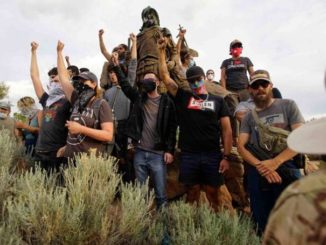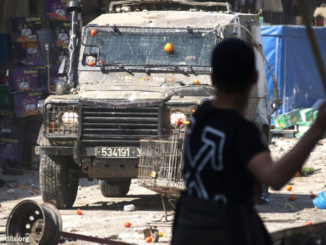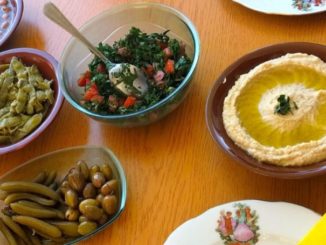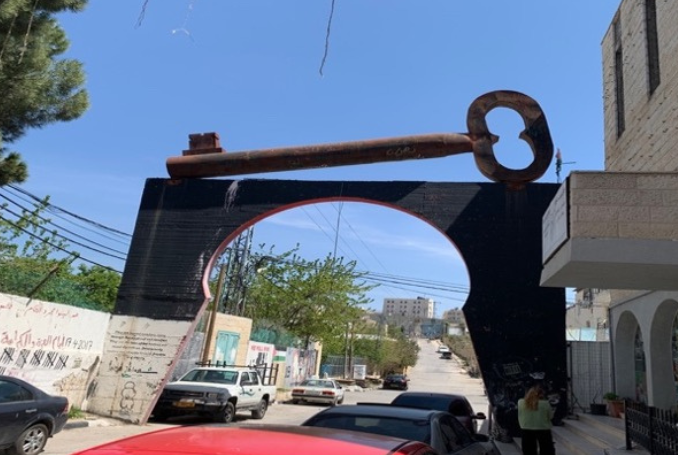
By David Harrop
“Eat your homeland’s lolium, but not the crusader’s wheat” (Traditional Palestinian saying)
We were wrapping up the interview and standing under the monumental key atop the archway into the Aida refugee camp in Bethlehem. For the last hour or more we had been discussing the role of grassroots, street-based social work in the context of occupation. Palestinian social workers practice building resilience and resistance in individuals and communities experiencing extreme psycho-social attrition with visceral and often lethal oppression.
Our discussion had been shaped by discussing the different actions of resistance. M. explained that the construction of the key was a major symbol of the resistance. It represents the continuing struggle for the right of refugees to return to their villages. Until the issues of Palestinian refugees has been resolved, and their right of return honored, there can be no true resolution to the occupation.
M. is a street-based social worker, who both lives and works on the streets of Aida camp, delivering a grassroots model of practice. He sees his role to help to safeguard youth by helping them to build resistance. The camp is next to the separation wall, and it is regularly the site of clashes between soldiers and youth. As he discussed his social worker role and belief in the centrality of actions or resistance, he observed.
“I want to think about meaningful resistance. You need to educate people to understand why you are resisting the occupation. We resist for peace and justice This occupation is a killing machine. They kill so many people so if you say that you want to resist non-violently, they will laugh at you. But we must find many ways to resist, and people need to choose which paths to take. With resistance, we can do so many things. Sometimes maybe more (alternatives) than picking up guns.”
He had already described several successful creative actions of community-based resistance before his invitation for me to meet the 350 resistance activists. The act of resistance is pivotal within the global radical social work tradition being central to trying to find different means for individuals and communities to push back against the forces of oppression. Its practice is the loadstone of political and social energies and Palestinian practice remains an exemplar of radical social work.
Getting into his car we climbed out of the crowded streets and alleys of Aida and onto the steep hill out of Bethlehem. Passing checkpoints, we went through the village of al Walaja where we paused to look at the twisted metal and crumbled concrete of a recently demolished house. Then passed a renowned 1000-year-old olive tree that the settlers had been threatening to chop down.
Eventually, we arrived at the end of the road by the fence. We looked at the view looking into west Jerusalem and steep-sided valleys carrying Israeli motorways and railways. Standing next to the fence, he pointed out the site of the infamous Nakba massacre at Deir Yassein, only a couple of miles away, over the first horizon.
We then approached a steel gate nestled underneath the concrete wall of the fence. He rang his friend who came and opened it. O. lives in a small farmstead which is an anomaly and technically in the municipality of Jerusalem. He has deeds of ownership and despite the offers from Israelis to buy his farm, he has refused to sell and continues to work his land.
The years of occupation have been characterized by extensive farmland losses with a consequent decline in Palestinian horticultural diversity, and the agricultural knowledge and traditions, risk being lost and forgotten. Initiatives such as the Palestinian Heirloom Seed Library have been established as acts of resistance against a colonial power that is seeking to control agricultural and economic activity, with the inevitable loss of diversity.
Traditionally the hills between Bethlehem and Hebron were the center of Palestinian cherry orchards and they were renowned for bountiful sweet and sour cherry harvests. However, the development of settlements has caused the destruction of many orchards and Palestinian cherries have largely disappeared.
With the help of youth from Aida camp, one of O.’s fields has been cleared and planted with 350 locally sourced cherry trees. The community in Aida is aware of their trees and they hold a symbolic value as trees of resistance and strength. The wall is a powerful representation of the occupation and “we are here, and you are there” This is even more so when it is on lands where there has been ethnically cleansing of indigenous peoples, so perhaps this orchard feels like a little piece of reclamation.
As we sat together discussing the value and meaning of resistance knowing that any meaningful prospect of liberation remains improbable, and where there is such an imbalance of power, we discussed the place of hope in the struggle
“The idea is to try and build hope for the people. Hope is the most important thing. If you lose hope then you can’t have a human life. But if you can look at yourself and not lose hope, you know that you are in your place. When you are building hope, you can be sad or angry, but you know that you are building hope as well”.
In this instance, hope must be realistic. It is not the belief that everything is going to be fine, but in the words of Rebecca Solnit, (Hope in the Dark 2005) it is a light in the darkness, which acknowledges that hope and despair often co-exist.
Similarly, Patrisse Khan-Cullors, a founding member of the BLM sees the movement’s mission to “provide hope and inspiration for collective action to build power. Hope which is rooted in the rage of injustice, but which points to visions and dreams of freedom”
In this sense hope is transformative, pointing to new forms of creative resistance. In this instance, it is an elegant understanding of the way in which indigenous horticulture delivers a fresh way for people to come together and reclaim national identity and culture.
It is akin to mushrooms appearing after rainfall. Mycologists point to the existence of huge complex underground structures, of which the mushrooms are only the surface fruiting bodies. Similarly, the complex network of ideas of resistance and activity which manifests itself in the symbolic act of planting a Palestinian cherry orchard is proof of the power of resistance
No doubt the fruit of the cherry trees will be sweet, but the deeper value will lie in the complex network of ideas and actions which have grown in the dark, but which brought them to fruit as part of the long struggle for liberation.
– David Harrop is an independent UK-registered social worker and co-founder of Palestine UK Social Work Network (PALUK) in 2011. Contact the author at his address email: harrop_david@yahoo.co.uk. Harrop contributed this article to The Palestine Chronicle.
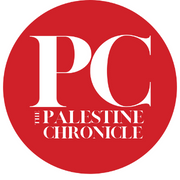
– David Harrop is an independent UK-registered social worker and co-founder of Palestine UK Social Work Network (PALUK) in 2011. Contact the author at his address email: harrop_david@yahoo.co.uk. He contributed this article to The Palestine Chronicle.



